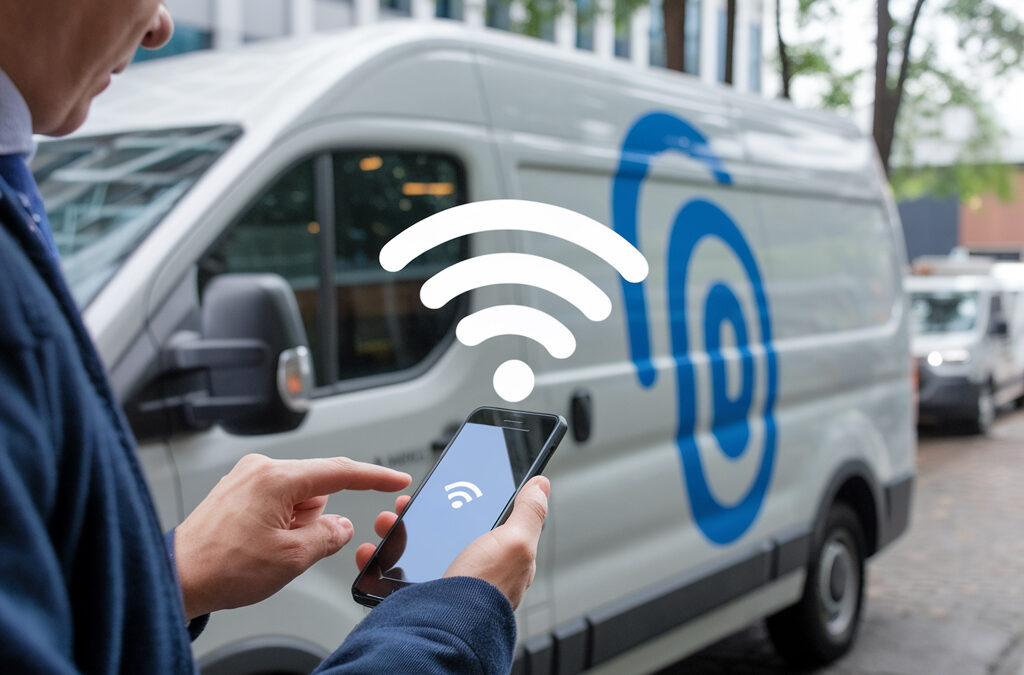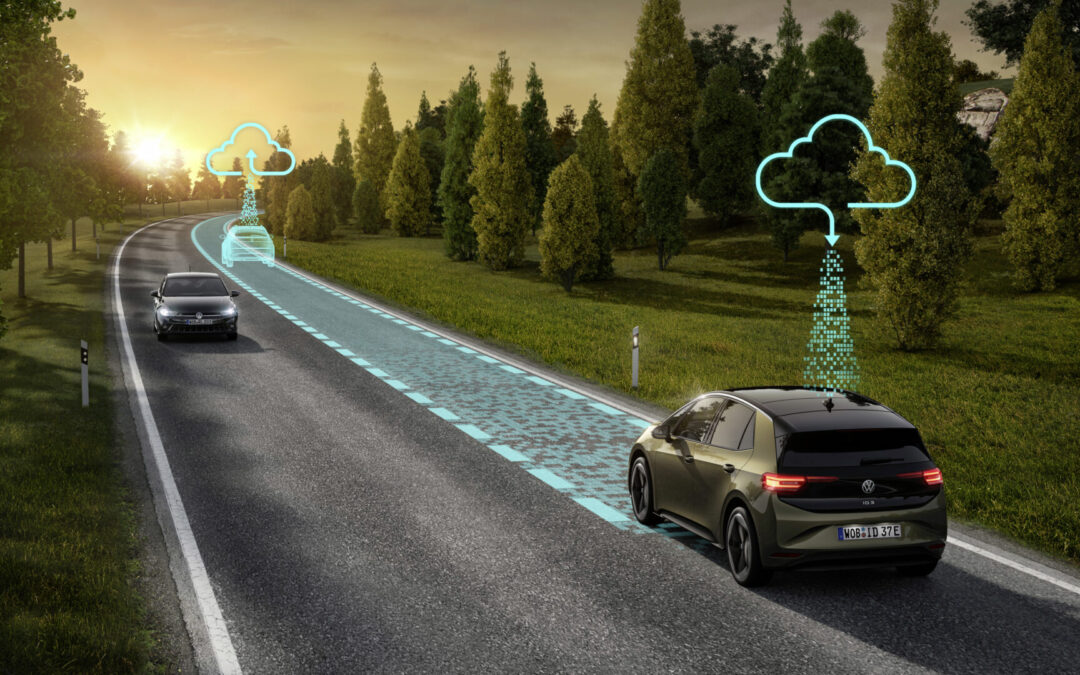Customer experience shapes workshops’ customer service and the automotive software industry! If we look at the world today it is certain that digital transformation is faster than ever. It disrupts every area of our lives, from the way we communicate, shop, pay, do business and drive our cars; and the list goes on. In this article, we discover how new customer expectations shape the automotive software industry. With particular attention to solutions aiming to strengthen customer relationships.
Heavy investment into automotive software
In recent years, the biggest influence on the automotive industry has been the C.A.S.E, (Connectivity, Autonomous, Sharing/Subscription, and Electrification) trends. These areas received massive amounts of investments. The automotive software market size is expected to reach ~USD 84 billion by 2030. It’s massive compared to the ~USD 34 billion market size of 2020). Two domains will grow particularly: ADAS (Advanced Driver Assistance System) and AD (Autonomous Driving). They take up 43% of the expected growth. Followed by infotainment, connectivity, security, and connected services with an 18% market share.
Another driver for expansion in the automotive software market is the necessity to expand functionalities and customize the software. According to McKinsey’s study, by 2030 almost all car platforms will have some form of connectivity and ADAS features. The software will become a strategic development area of the automotive industry. Due to the continuous expansion of different vehicle functionalities.
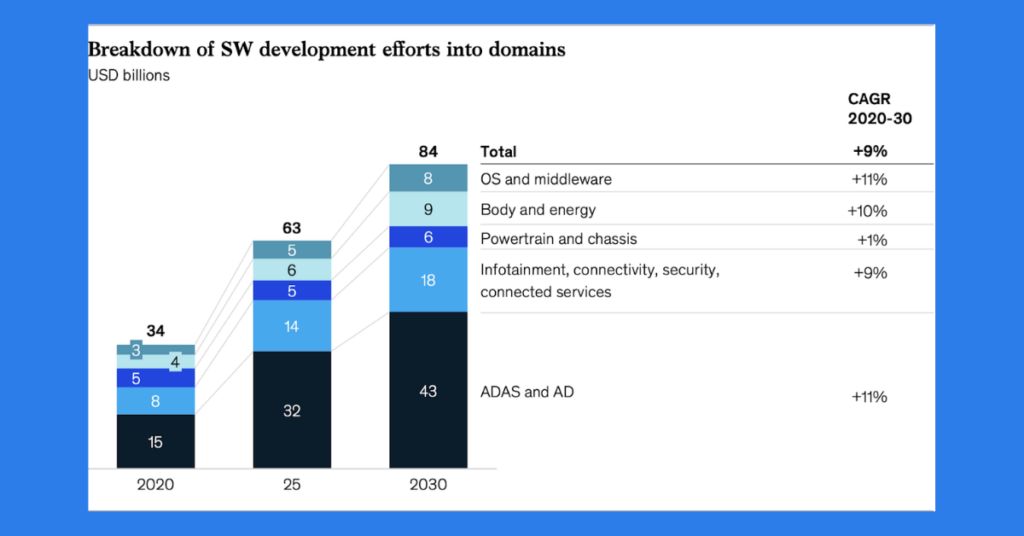
McKinsey forecast within the automotive software development (Source: Automotive software and electronics 2030 — Mapping the sector’s future landscape)
Dealerships and workshops should establish personalized yet digitalized customer relationship
Consumers like a fully digital world and they expect full connectivity, even in their cars. Customer service and dialogue with brands are expected to be fast, easy, and personalized. When it comes to service, maintenance, and driving experience, the same principles apply; an overall 360-degree digital experience.
Ultimately we are talking about everyday people who are used to using services and buying goods in a few clicks. The automotive industry is no exception to this trend. The sales cycle, after-sales maintenance, and overarching customer service have to become digital along with user-friendly platforms. Looking at the above-mentioned reasons fostering a solid customer relationship is paramount. The changing customer demand is well reflected in V12’s study. 54% of customers say they would buy a car from a dealer that offers the best customer experience (CX). Even if they have higher prices on the market. Dealers should prepare for a new way of doing business.
The customer experience at the forefront
According to Deloitte’s study, customer experience is important to 78% of people. They also mention that there is still “too much paperwork” or the “overall experience took too long”. The survey result also indicates that aftersales CX is insufficient. 48% of responders were never contacted after purchasing the vehicle by the dealer. It is a well-known phenomenon that customers leave their workshops after the warranty ends. Without the appropriate customer management system workshops don’t know the why. Secondly, are not able to follow up on these lost customers. So, here comes utilizing connectivity in favor of customer retention and relationship building.

Customer experience is under the spotlight
‘In our current technology-fuelled-world dealerships and workshops should connect with their customers on a more personal level. Workshops should rethink their service approach from reactive to proactive.’
Success in the Nordics with Connected Car
Semler group one of the biggest and oldest importers in Denmark has recognized the rapid changes in the industry. The demand for digitalization so they invested heavily in these areas. One of their main focus was connectivity, hence Connected Cars came to life 4 years ago.
When asked Håkan Ohlin, the general manager of the Nordics, he said:
‘ It’s a great opportunity for us to be able to be part of changing workshops’ mindset. Our workshops’ service advisors now have the necessary real-time data about a car. Consequently, they can prepare well ahead and book customers ahead for their next service. The nordic market now is filled with end-users driving connected vehicles. At the same time, workshops want to give the best service of all time. We see a fantastic response from both end-users and workshops. From our experience, it is clear that strengthening workshops’ and customer relationships is the way forward in the automotive industry.’
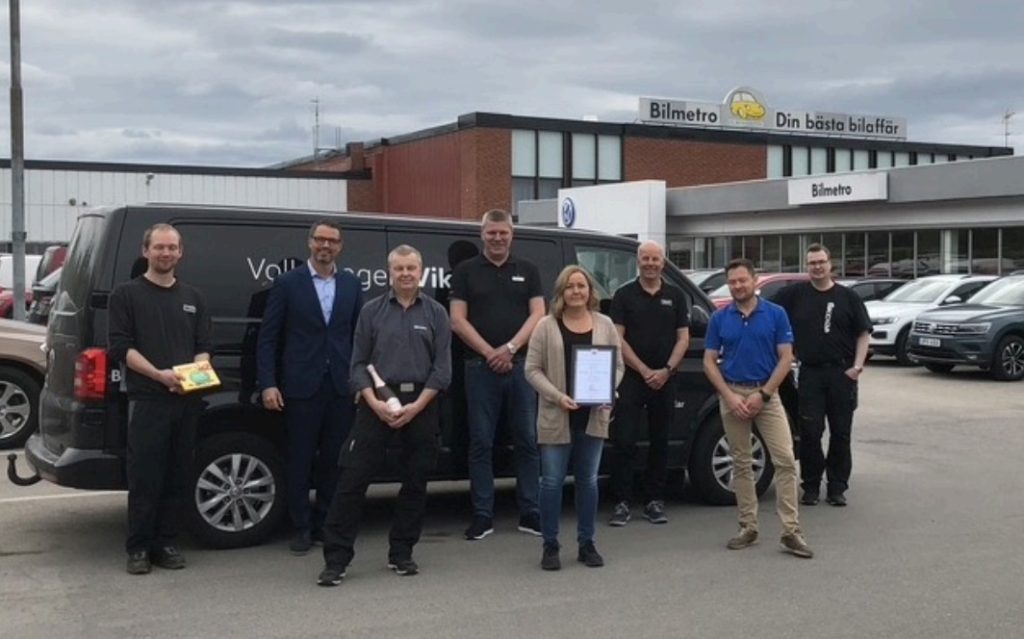
Customer case from Sweden — Great product adoption
The primary user of our product is the workshop’s service advisor, the middleman between the customer and the technicians. Being on the frontline their daily tasks are multifaceted. Varying from keeping in touch with the customers and technicians. Secondly, booking service appointments, and making sure that the right spare parts are available for technicians sending offers, quotes, etc. Workflows are complex, demanding attention to detail and good organizational and communication skills both with the customer and the technician.
Bilmetro’s success with Connected Cars
Bilmetro is one of the larger Volkswagen dealer groups in Sweden. They are using our ConnectedWorkshop for their fleet customers with great success. Johan Harsia-Ollas is working in Bilmetro’s Borlänge dealership as a service advisor. He has been one of the early adopters and ambassadors of the ConnectedWorkshop. When we asked him about his experiences with the product he said:
‘One of the most important values for me is that the tool is easy to use and understand. We in the frontline are extremely busy and we need easy tools that can help our daily work. The fact that I can see 30 days ahead of any service due, made a huge difference. I have time to book in the customer and sell more in the meantime.’
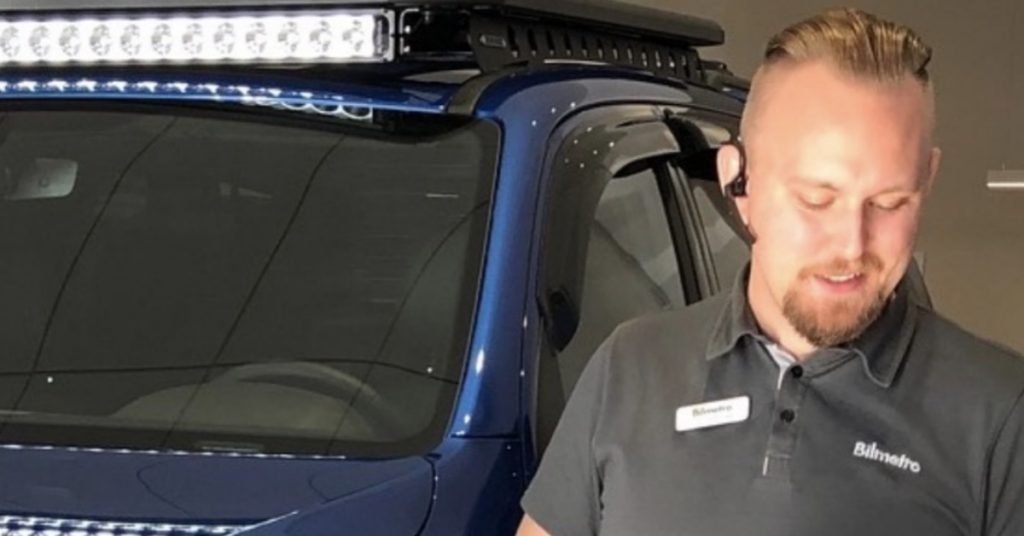
When we asked about his favorite features in ConnectedWorkshop:
‘The biggest thing is the service leads function. It is straight in front of me what needs to be done and in which car. Both I and the customers love the chat function too. Quoting, image, and video recording for warranty are super simple to exchange. File exchange has been a problem in the past due to the large file size. Customer management just became agile and flowing. End-users like the app. It’s not overly complicated. They have what they need to know about their cars.’

Also becoming proactive instead of reactive made a big difference in Johan’s daily work:
‘In the past, the customers only called us when the damage happened. We were not able to give them an appointment straight away as we are usually booked 2 weeks ahead. Both us and the customers appreciate this aspect of our service. We have established a far better customer experience with this, than before.’ he added.
Conclusion
With the rise of digital technology customer demands have changed radically towards brands. Customer experience is crucial in the buying process also when it comes to buying a car. On the other hand, these changes have affected the software industry within the automotive sector. Technology should serve customers in the best possible way. Connectivity is a huge opportunity for workshops and dealerships.
From the software developer’s perspective what is key is to keep their users in mind as their north star.
So what features characterize customer management software in the auto industry? It must be stable, and easy to use. A good customer experience and the relationship between the customer and the workshop.


